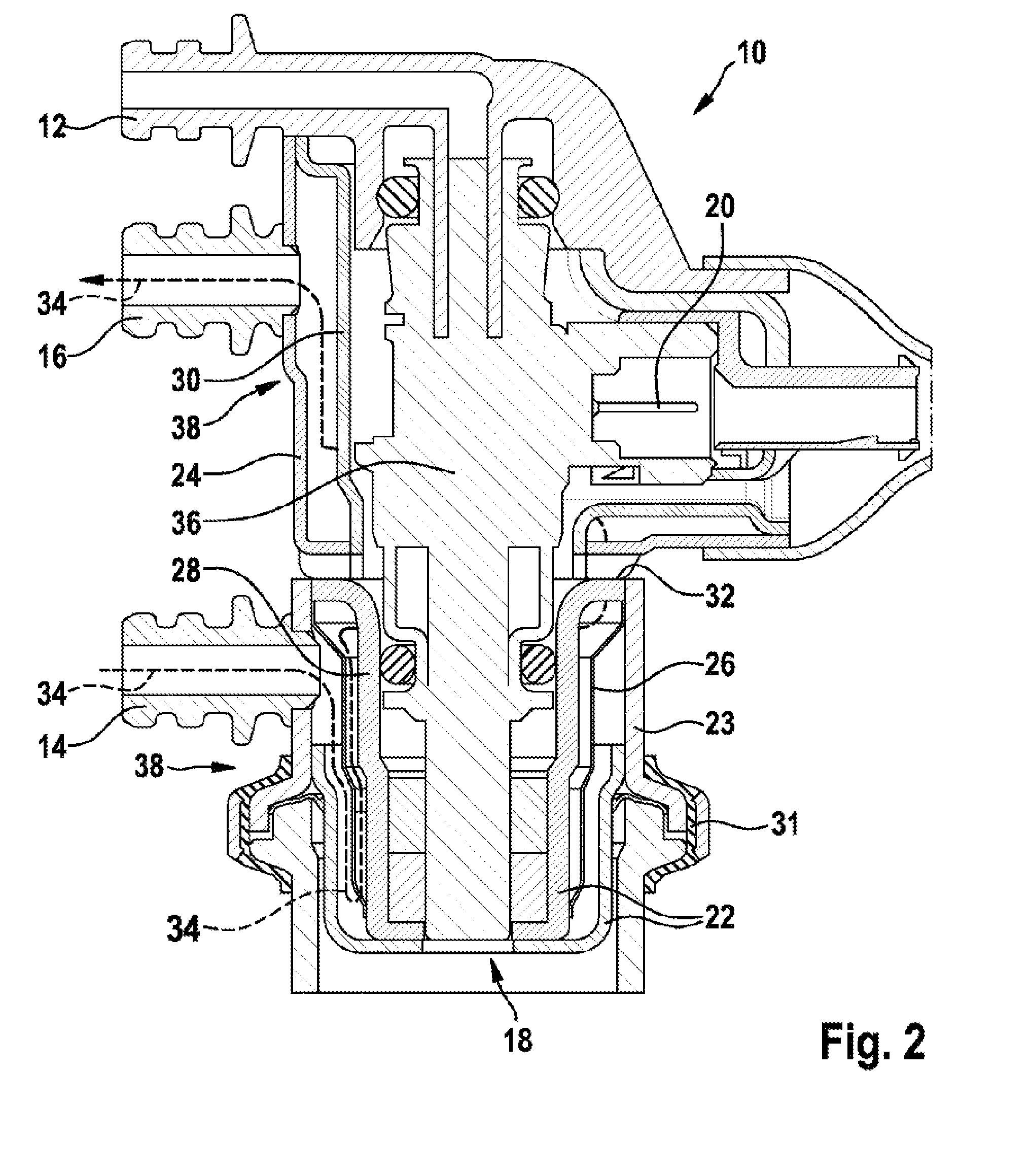Water-cooled dosing module
a technology of water-cooled dosing module and dosing valve, which is applied in the direction of engines, mechanical equipment, machines/engines, etc., can solve the problems of inability to achieve cooling effect in the top region, possible outage of valve and/or electrical contact means of dosing valve, etc., and achieve high variability, high variance, and high variability
- Summary
- Abstract
- Description
- Claims
- Application Information
AI Technical Summary
Benefits of technology
Problems solved by technology
Method used
Image
Examples
Embodiment Construction
[0022]A dosing module 10 proposed according to the invention is used to meter a reducing agent into the exhaust system of an internal combustion engine. By means of the reducing agent, the NOx constituents contained in the exhaust gas from the internal combustion engines are reduced to H2O and N2. As a reducing agent, use is made primarily of aqueous urea solutions or other urea mixtures. One known reducing agent is known by the trade name AdBlue® and is used in dosing systems of this kind
[0023]FIG. 1 shows a section through a dosing module 10, which is provided with a full enclosure and comprises a lower cooling member and an upper cooling member.
[0024]The section according to FIG. 1 shows a dosing module, in the upper region of which there extends a laterally projecting reducing agent feed. Via the reducing agent feed 12, the reducing agent flows to a dosing valve 36 of the dosing module 10. The dosing valve 36 of the dosing module 10 is contacted electrically via an electrical co...
PUM
 Login to View More
Login to View More Abstract
Description
Claims
Application Information
 Login to View More
Login to View More - R&D
- Intellectual Property
- Life Sciences
- Materials
- Tech Scout
- Unparalleled Data Quality
- Higher Quality Content
- 60% Fewer Hallucinations
Browse by: Latest US Patents, China's latest patents, Technical Efficacy Thesaurus, Application Domain, Technology Topic, Popular Technical Reports.
© 2025 PatSnap. All rights reserved.Legal|Privacy policy|Modern Slavery Act Transparency Statement|Sitemap|About US| Contact US: help@patsnap.com



